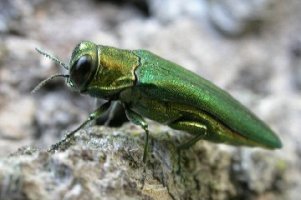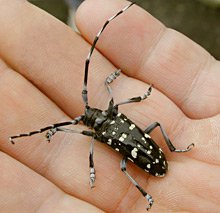August: Time to Give Your Trees a Checkup!
The days are starting to get shorter and summer will end in not much more than a month! Soon it will be time to get out warmer clothes and jackets. Even though fall will be arriving soon and winter will follow, late August is a good time to give your outdoor trees a check up. With that in mind, head outdoors to soak up the last bit of the summer sun and give your trees a thorough check up.
The U.S. Department of Agriculture (USDA) has officially named the month of August Tree Check Month. The USDA recommends tree owners to get outside and take a look at their trees for just 10 minutes. In such a small amount of time, you could save your tree’s life. Two pests that you should check for—emerald ash borer (EAB) and Asian longhorned beetle (ALB)—that are destroying trees in several regions of the U.S. and Canada.
1) Emerald ash borer: The emerald ash borer is a destructive wood-boring pest of ash trees. Native to China, Mongolia, North Korea, South Korea, Japan, Taiwan, and the Russian Far East, the emerald ash borer beetle (EAB) was unknown in North America until its discovery in southeast Michigan in 2002. Today, EAB infestations have been detected in 25 states; Arkansas, Colorado, Connecticut, Georgia, Illinois, Indiana, Iowa, Kansas, Kentucky, Louisiana, Maryland, Massachusetts, Michigan, Minnesota, Missouri, New Hampshire, New Jersey, New York, North Carolina, Ohio, Pennsylvania, Tennessee, Virginia, West Virginia, and Wisconsin. More than one million ash trees in the U.S. and Canada have been harmed by EAB. In just 10 minutes, you could visually detect the signs of an EAB infestation. An infestation can be recognized on ash trees by D-shaped holes or shallow S-shaped trails under the bark.
University of Missouri Extension Emerald Ash Borer Page
EAB Management for Homeowners on the University of Missouri Extension website
2) Asian longhorned beetle: Another pest that is harming the health of trees is ALB. As summer winds down, the infestation reaches its height; August is the peak month for ALB emergence. The insect has an approximately one-inch body, long black and white banded antennae, a shiny, black body with white spots and six legs. These pests burrow deep in the tissues that carry water and nutrients throughout the tree. In turn, the tree then starves, weakens and eventually will die. Unlike EAB, which attacks only ash trees, ALB is after many trees, including willow, poplar, mountain ash, mimosa, maple and many more.
Early detection is key to helping your trees survive EAB and ALB infestations. Now that you’re spending your last few weeks of summer swimming in the pool, taking a walk in the park or picnicking in your backyard, take a few minutes to inspect the trees near you. The sooner you catch these pesky pests, the better chance your tree will have for treatment and survival.
USDA Asian Longhorned Beetle Page
University of Missouri Extension Asian Longhorned Beetle Page
Visit the link below for more information on plant pests and diseases.




